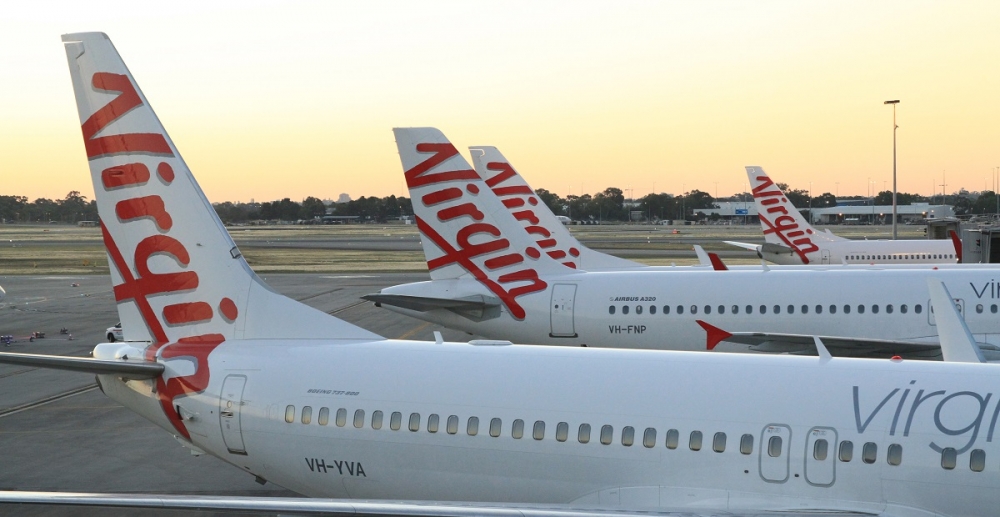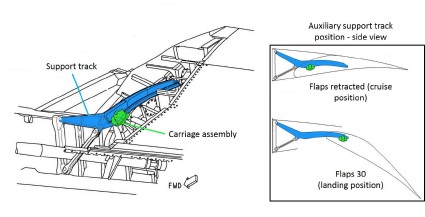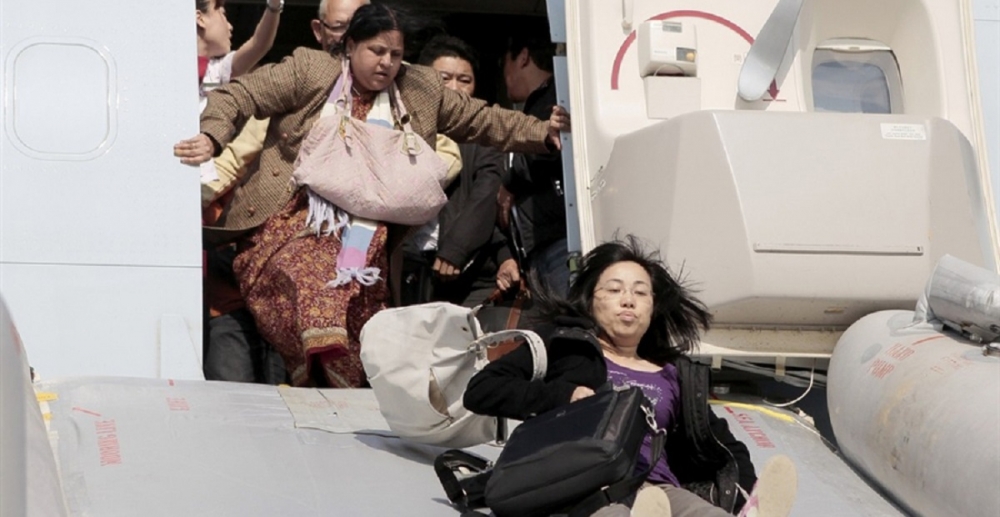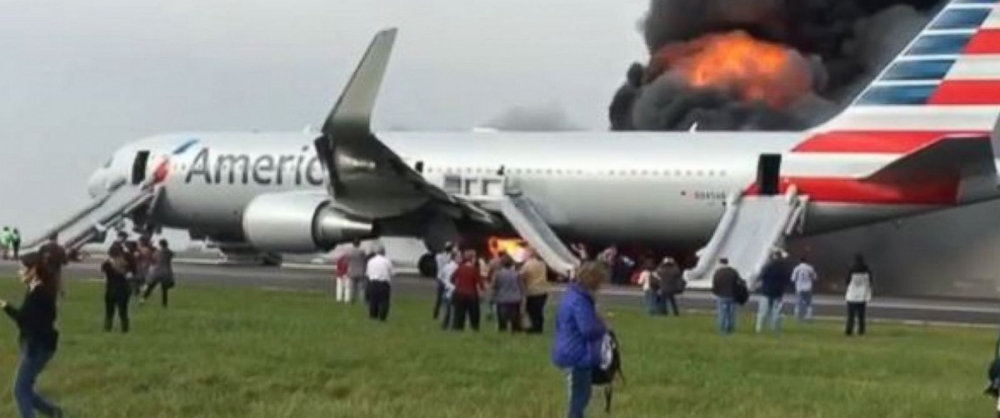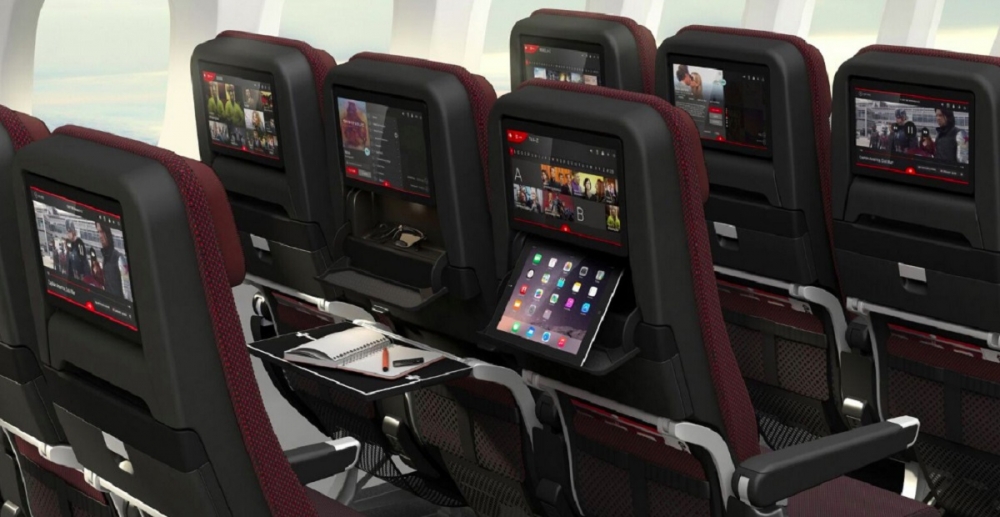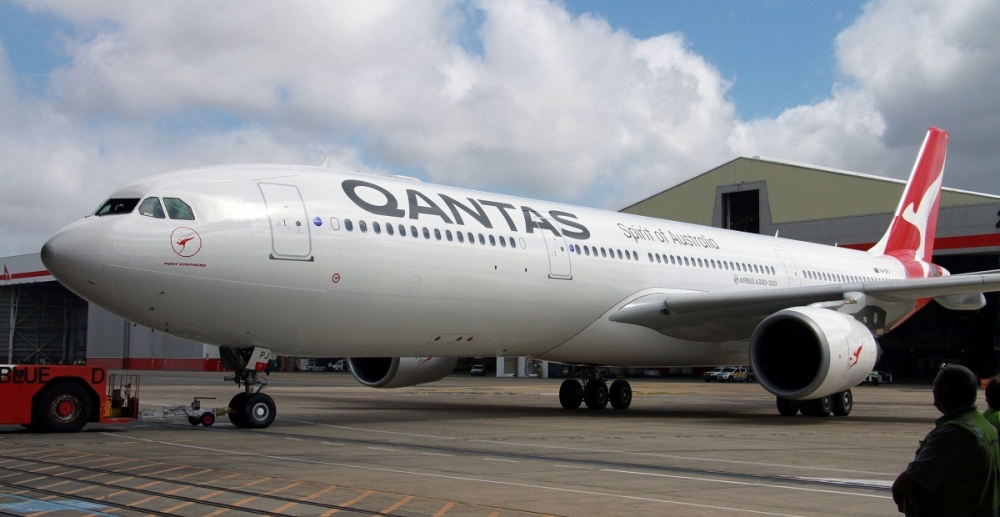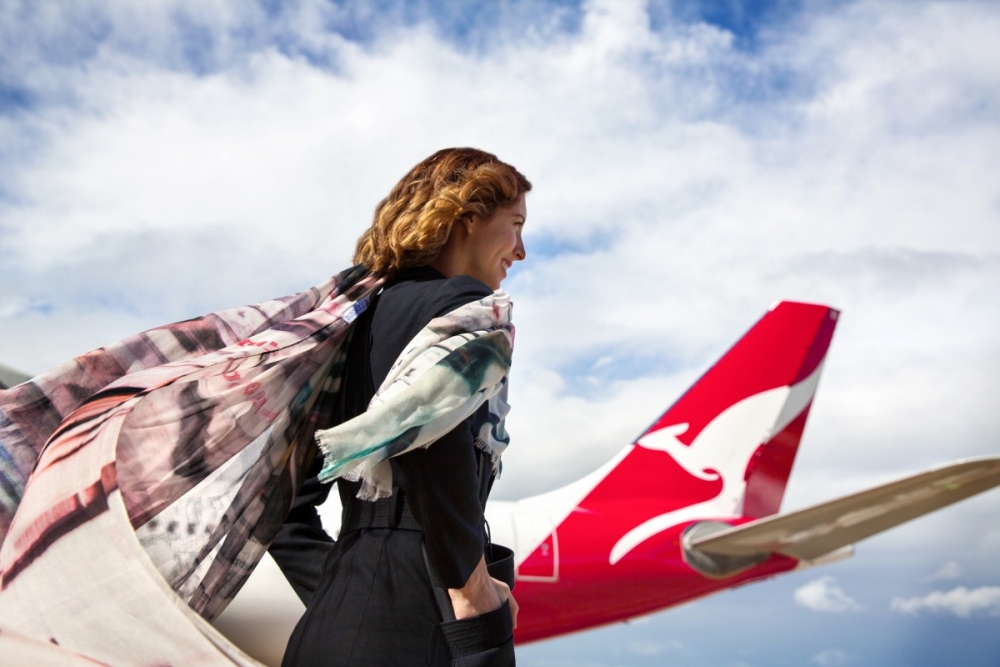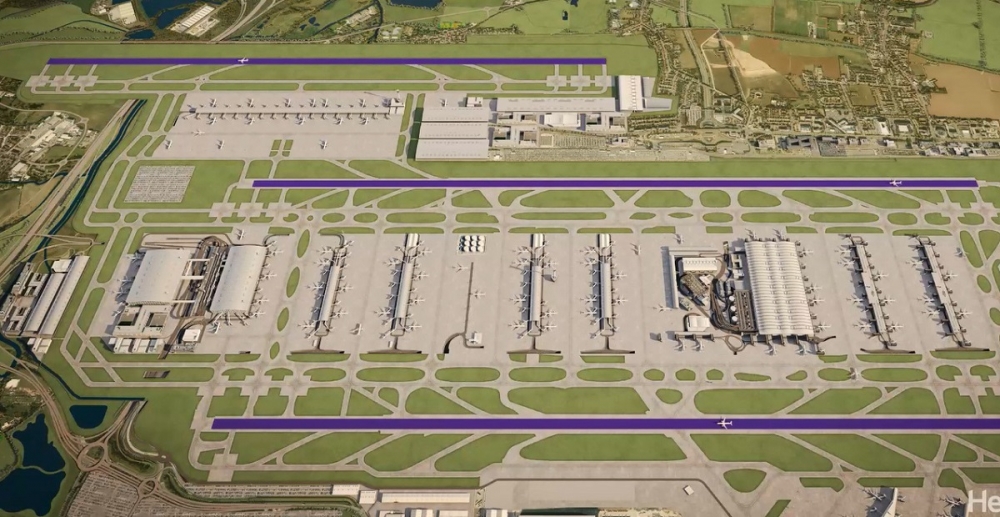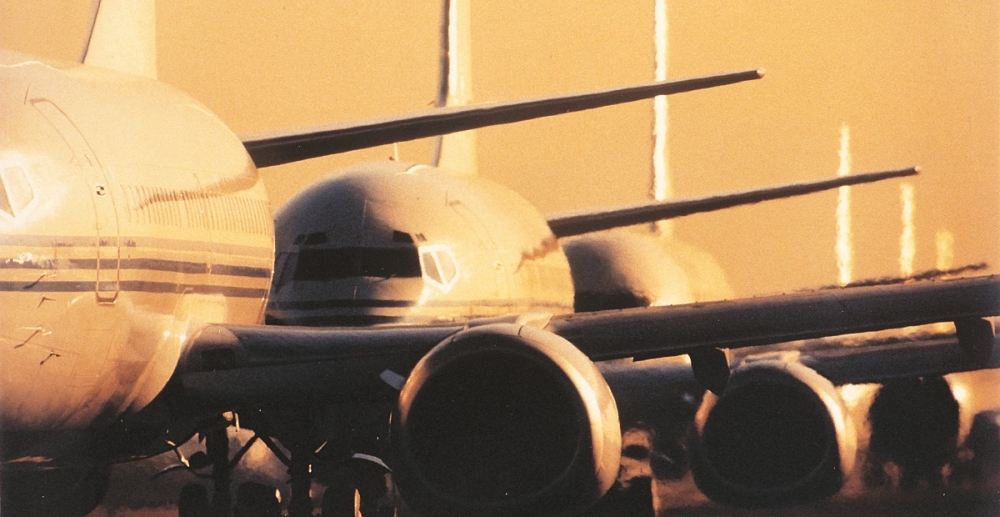Passengers waiting in a Qantas lounge of the future to board the airline’s aircraft of the future would be able talk to an intelligent personal assistant running advanced artificial intelligence algorithms to act as a personal companion and guide.
They would have already checked in sophisticated luggage that pairs with a Q bag tag to track belongings anywhere across the world. The smart travel companion would be able to follow its owner, weigh itself and could be remotely locked or unlocked.
As the passenger boards, sensors in the overhead lockers detect whether or not a locker is full and a LED strip indicates if there is space for carry-on luggage.
The traveller would settle into a business pod that would synchronise their personal devices with high definition screens complete with data feeds, video conferencing and a “surround’’ entertainment system that syncs with electronic pyjamas to allow passengers to feel their favourite movie.
Mixed reality glasses with see-through holographic lenses will also provide digital experiences such as travel alerts and interactive entertainment.
These would be complemented by lightweight, wireless stereo earphones capable of blocking ambient noise and able to play up to 1,000 songs.
Helping passengers remain comfortable would be high-tech cushioning connected by Bluetooth to the personal inflight entertainment system. Sensors would monitor a passenger’s heart-rate, respiration, posture and sitting habits to provide personal health and comfort recommendations.
The system would alert them to poor posture or recommend when it was time to do a lap of the cabin.
A smart cup would also monitor water intake and alert customers to the need to hydrate recommend optimum consumption levels for particular beverages.
And for those wanting to go a step further, an adjustable headset could monitor brainwaves and adjust the environment, mealtimes and entertainment to their emotional state.
Meanwhile, smart LED strips would project the outside view or scenes such as an ocean dawn or desert night sky on the cabin roof.
The aircraft would be powered by biofuel produced from sustainable sources to reduce its impact on the environment and datalinks to ground staff would boost safety.
Qantas admits some ideas for its aircraft of the future concept may be of the "blue sky'' variety but it argues aviation has been, and will always be, a source of great innovation.
“It’s why airlines and aircraft manufacturers are constantly trying to evolve the customer experience,’’ a spokesman says. “Qantas has a proud record of pushing the boundaries being the first airline to operate jet services across the Pacific and in 1971 we were the first airline to introduce Business Class.
“It remains to be seen how many of these concepts get off the ground but rapid improvements in technology are allowing us to already use big data to analyse the best flight paths across the Pacific and give customers the ability to stream entertainment to their own devices.’’
In fact, many airlines are taking a hard look at what the technology in new “connected’’ planes can offer as technology continues to change the way people travel. On-board Wi-fi, once shunned by travellers, is now being widely adopted to provide the inflight connectivity craved by a new generation of passengers .
Technology company SITA estimates the proportion of airlines offering on-board internet to passenger’s devices will jump from roughly a third today to 74 per cent by 2019, with 70 per cent offering multimedia file streaming.
Departure halls have already been transformed by the introduction of self-service kiosks and the International Air Transport Association expects this to continue with the migration to smartphone apps that allow people to check in outside the airport. This may one day render on-airport check-in facilities obselete, according to some predictions.
SITA expects mobile phone boarding passes, already widespread, to be “almost universal’’ by 2019 and believes almost half of airlines will offer smartwatch boarding by this date.
More than half of airlines are expected to trial wearable technologies over the next decade and there will be a similar move towards a single biometric travel token for identity management.
A smaller but sill significant 44 per cent say they will look at artificial intelligence in the next 10 years and 37 per cent expect to look at virtual reality.
A number of airlines have already joined Qantas in using streaming technology to allow people to access inflight entertainment on their own devices and there is a big move towards phone apps that provide functionality beyond a boarding pass. Air New Zealand customers, for example, can order a barista-made coffee before they arrive at the airport lounge.
Other ground-based technology that aims to make trips simpler includes biometric bag drops and a plethora of apps that do everything from booking a flight to helping you pack or checking to see if a better seat is available.
Some of those apps, such as Kayak and Worldmate, consolidate the flow of information to give fingertip access to hotel and flight bookings while building an itinerary and allowing you track flights.
Hopper analyses billions of airfares each day to predict future flight prices and tell travellers the best time to book. Its makers claim it predicts future price prices with 95 per cent accuracy and it has already collectively saved users tens of millions of dollars.
Seat Alerts monitors available seats and lets you know if a window or aisle seat becomes available so you can jump on the phone to the airline.
Apps also help travellers navigate unfamiliar airports, where negotiating passport control is getting easier with the increasing use of technology that uses biometric information stored electronically on passports to process travellers through automated gates.
Technology is also beginning to ease the pain of negotiating security checkpoints as airports look at new security scanners that cut queues and allow people to leave items such as laptops in bags.
Amsterdam’s Schiphol Airport and London’s Luton Airport have introduced computed tomography (CT) scanners which generate 360-degree three-dimensional images able to more quickly process bags and cut wait times by as much as half. The scanners also include automated belts that pull bags into the machine and return empty trays to the start of the checkpoint.
The technology, which has also been trialled at Singapore’s Changi Airport and is due to be part of pilot program in Phoenix involving American Airlines, is able to run bags continuously through the system without the need to remove liquids, gels or laptops.















